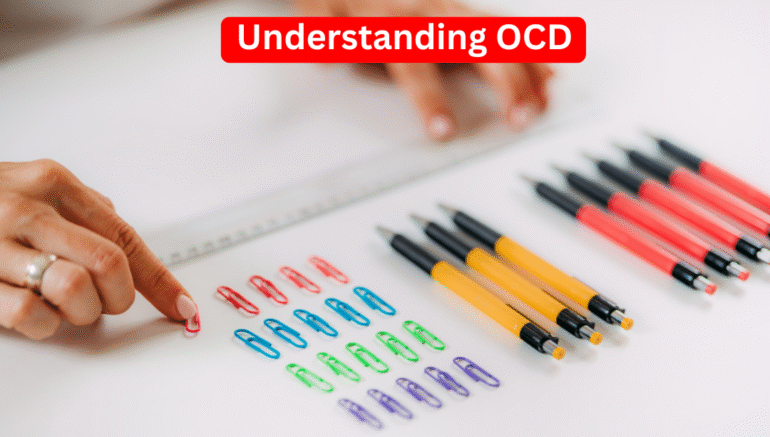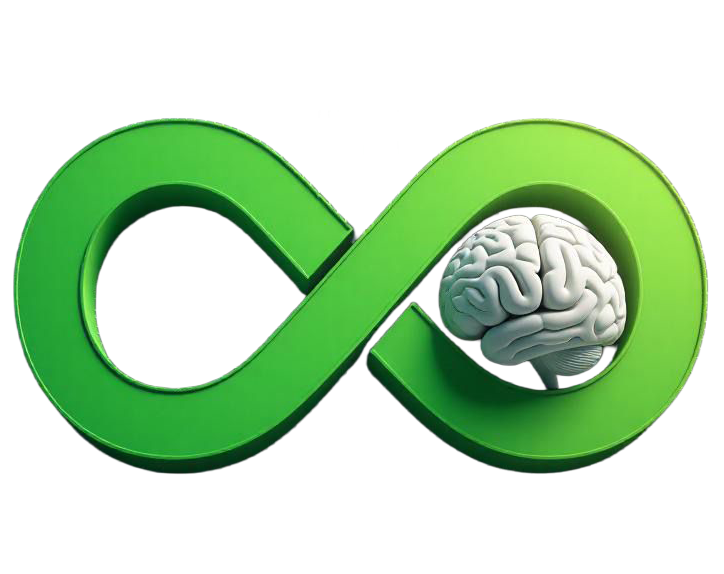
February 9, 2023
What Is OCD?
All of us have intrusive thoughts every now and then, when we ask ourselves whether we have locked the door or cleaned our hands properly. To the majority of individuals, these are fast thoughts. However, in relation to people with Obsessive-Compulsive Disorder (OCD), these thoughts are overwhelming, repetitive, and anxiety-provoking. To provide relief, they tend to be compulsive – rituals or actions aimed at alleviating the anxiety.
It is one of the most prevalent anxiety-related disorders, as the National Institute of Mental Health (NIMH) suggests that roughly 1.2% of U.S. adults fall ill with OCD every year. Not being neat or being organized. It is a severe psychiatric disorder that may disrupt work, relationships, and lifestyle.
In this blog, we are going to discuss the causes, difficulties, and support opportunities of living with OCD.
Causes of OCD: What Science Tells Us
Although the specific cause of OCD is in the process of investigation, researchers have outlined some causes of the disorder:
Biological Factors
- Brain Function: Research indicates the variation in the orbitofrontal, anterior cingulate, and basal ganglia that control decision-making and habits.
- Neurotransmitters: OCD symptoms are associated with low levels of serotonin, so the medications that control serotonin levels (SSRIs) can be useful with many patients.
Genetic Factors
- Family research indicates that OCD has a familial risk, where particular genes have yet to be studied.
- The presence of a close relative with OCD predisposes the risk, especially when the illness occurs in life during childhood.
Environmental Factors
- Symptoms may be caused by stressful life events, trauma, or a major illness.
- Sudden-onset OCD has been attributed to some infections in children (e.g., the PANDAS syndrome).
Psychological Factors
OCD is associated with anxiety disorders, perfectionism, and cognitive distortions, like an overestimation of danger or responsibility.
Common Symptoms and Types of OCD
OCD symptoms generally fall into two categories: obsessions (intrusive thoughts) and compulsions (repetitive behaviors).
Comparative Table: Obsessions vs. Compulsions in OCD
| Aspect | Obsessions (Intrusive Thoughts) | Compulsions (Repetitive Behaviors) |
| Definition | Unwanted, intrusive thoughts, images, or urges that cause anxiety or distress | Rituals or actions performed to reduce the anxiety caused by obsessions |
| Examples | Fear of contamination, harming others, need for symmetry, taboo thoughts | Excessive cleaning, checking locks, counting, and arranging objects |
| Emotional Impact | Triggers intense anxiety, guilt, or fear | Provides temporary relief but reinforces the cycle |
| Cognitive Aspect | Driven by distorted beliefs (e.g., “If I don’t check, something bad will happen”) | Attempts to neutralize or “undo” obsessive thoughts |
| Duration | Can occupy the mind for hours each day | Can consume significant time and interfere with daily life |
| Effect on Daily Life | Constant mental distress, difficulty focusing | Loss of productivity, exhaustion, and strained relationships |
The Problems of Living with OCD.
1. Psychological Strain
OCD puts a lot of strain on the minds of individuals. Anxiety, guilt, and fear are often the result of intrusive thoughts, which leave the person in a state of unending conflict. Most of them are aware of irrationality in their behaviors, but they cannot do anything about it.
2. Social/occupational Problems.
Compulsive rituals often disrupt work performance and duties. In relationships, people fail to understand the severity and acuity of OCD when their loved ones cannot comprehend the extent to which it can be taken.
3. Time Consumption
It is possible that repetitive behaviors take up a number of hours a day. This leaves minimal time to join hobbies, relax, and even have meaningful relationships. Hence, lowers their quality of life.
4. Stigmatization and Misconception.
OCD is commonly shoved aside as a mere idiosyncrasy or cleanliness. These misunderstandings deny the person access to early help, and in the process, they continue to suffer.
Treatment and Support of OCD.
The positive thing is that OCD can be treated. Symptoms can be brought down considerably with a combination of therapy, medication, and lifestyle measures.
Psychotherapy
- Cognitive Behavioral Therapy (CBT): Assists with the challenge of irrational thoughts.
- Exposure and Response Prevention (ERP): a variant of CBT in which individuals are exposed to fears and are taught to resist compulsions- the gold standard treatment of OCD.
Medications
- Selective Serotonin Reuptake Inhibitors (SSRI): e.g., fluoxetine, sertraline, and fluvoxamine.
- Clomipramine (a tricyclic antidepressant): Stronger but with more side effects.
Hobbies, All-Life Strategies.
- Mindfulness and meditation to activate anxiety triggers.
- Eat well and work out to control mood and reduce stress.
- Online support groups (as well as in-person) to find support with other people with OCD.
Support Networks
- Patients and families can get resources in organizations such as NAMI, International OCD Foundation (IOCDF), and local mental health programs.
- Family therapy is a way to make loved ones aware of how to be supportive without becoming an enabler to compulsions.

Life with OCD in the U.S.: The Hope.
OCD is gaining awareness in the U.S. through mental health campaigns, advocacy groups, and research activities. There is increased accommodation of people with OCD in more workplaces and schools under the Americans with Disabilities Act (ADA).
Through the appropriate mix of therapy, encouragement, and persistence, it is estimated that many OCD patients lead productive, happy, and artistic lives.
Conclusion: The End of the Cycle.
Obsessive-Compulsive Disorder is not a habit, but a severe mental disorder that afflicts millions of Americans. Its causes are biological, psychological, and environmental, whereas its obstacles reach almost all spheres of life.
OCD is treatable with proper treatment, medication, and good support networks. It is not likely that the cycle of obsessions and compulsions is easy to break, but this can be possible. Through understanding, sympathy, and professional treatment, individuals with OCD can rediscover their liberty and hope.






